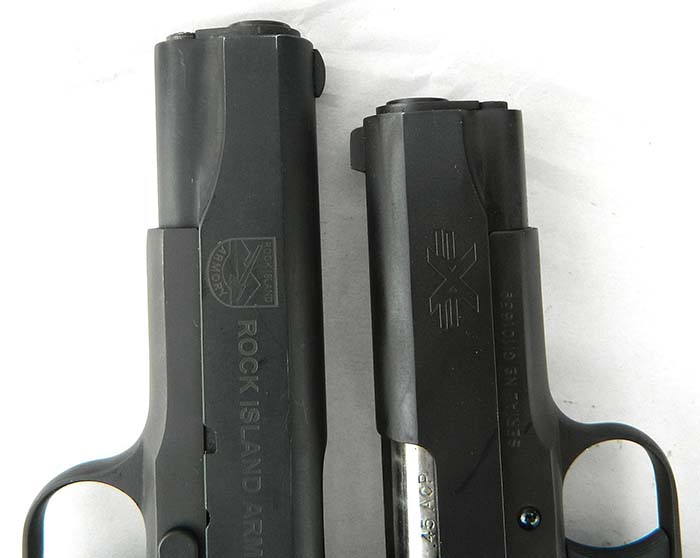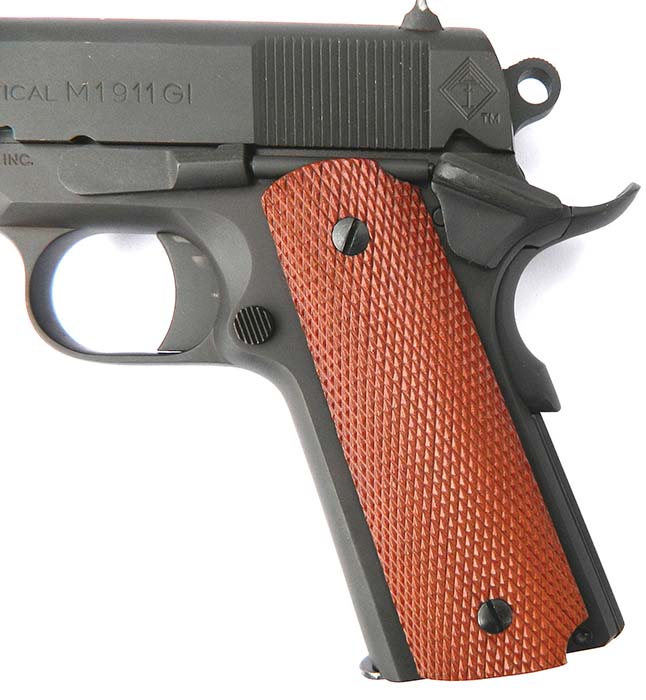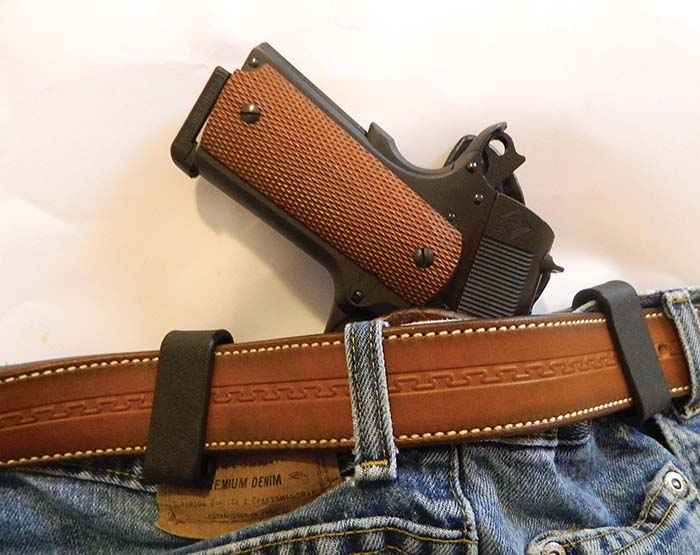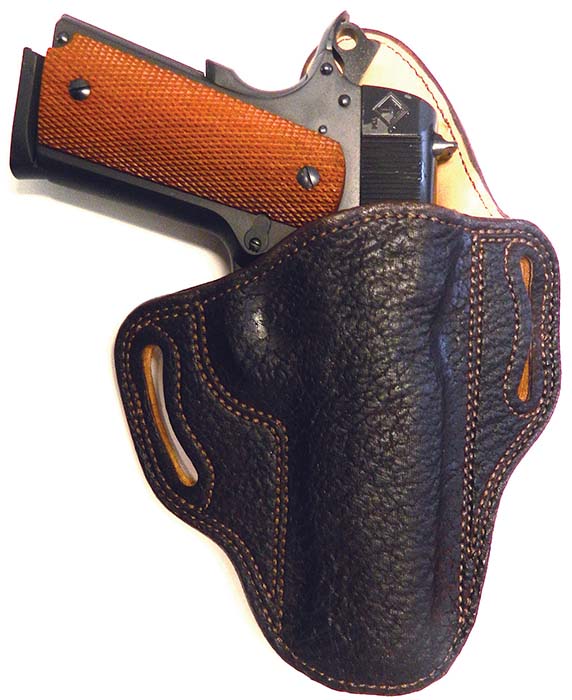By R.K. Campbell
When discussing any other handgun we take the pistol on its own merits. But when the discussion turns to 1911 type handguns we must look at the history of the pistol. This simply puts the popularity of the type in perspective. The 1911 pistol was adopted by our armed forces in 1911. Civilian sales began around 1912. The pistol proved its mettle in many battles large and small in the United States and Mexico and really made its reputation during World War One. More action followed and in the end the 1911 .45 automatic emerged as the greatest fighting pistol the world has seen. As such it is no surprise the pistol has sometimes been highly in demand. The original maker, Colt, still makes 1911 handguns but there are at least a dozen competitors – perhaps more. There is tremendous competition in the low end range as makers attempt to produce a credible pistol at a price point that all can afford. Compared to the history of the 1911 pistol, the history of the Philippine makers is short but they have made considerable inroads into the United States market. Most of the 1911 clones produced, beginning with the indifferent Spanish makers, have been full size pistols. Shooters Arms Manufacturing (S.A.M.), of Quezon City, Philippines, offers a Commander type 1911 that is marketed in the United States by ATI. The Commander size pistol is simply a 1911 with a four and one quarter inch barrel compared to the standard five inch model. With the four and one quarter inch barrel the standard barrel bushing and locking lugs are maintained. Moving to the four inch and shorter versions it is necessary to use a coned barrel and modify the locking lugs. The Commander size is preferred by many shooters and the type handles in a similar fashion to the Government Model. While the original Commander and the current Colt Lightweight Commander are aluminum frame handguns in order to reduce weight the ATI version is a steel frame pistol. Many shooters prefer the steel frame pistol for longevity and recoil control. The American Tactical Imports offering is of cast, not forged steel. If done properly, casting is not a defect. There were no bubbles or air pockets visible in the steel of the pistol nor did the finish appear porous.

The design philosophy of the company is to offer a product that is of high quality but affordable. Some corners have to be cut in manufacture to produce a low end pistol but just the same we would hope it is finish or frills that are cut and not mechanical integrity. The ATI pistol is not devoid of features, however. While most 1911 pistols in this price range feature original GI sights, the Commander tested has high profile sights similar to the old King’s Hardballer design. These sights offer a bolder sight picture and are easier to acquire in an emergency. They are also much easier to snag on the belt and manipulate the slide when doing a critical one hand stoppage drill. The ejection port is the GI type rather than the popular scalloped type. The grip safety is a beavertail or custom type. This beavertail grip safety aids in several aspects of shooting. First it funnels the hand into the proper grip on the handgun. Second, since this grip safety must be depressed in order for the pistol to fire, the shooter is more likely to fully depress the grip safety during a maximum speed drill with this type of grip safety. The shooter that adopts the popular thumbs forward grip will sometimes raise his palm off of a standard grip safety. With the upswept beavertail safety this problem is alleviated. Finally, to an extent, many shooters find that the larger beavertail safety spreads recoil about the palm more efficiently. The beavertail safety released the trigger about mid way in its travel, ideal for most applications.

The slide lock and magazine release are not extended. This is as it should be on a service grade pistol. The slide lock safety is also a standard type. The fitting of the barrel bushing, barrel to slide fit and slide to frame fit are good. The pistol does not rattle when shook and the slide rolls smoothly over the locking lugs. The hammer is of the burr or rowel type usually referred to simply as a Commander hammer. Despite what appears to be competent fitting of most parts a complaint was lodged concerning the fitting of the slide lock safety. The safety was positive in operation but most who handled the pistol felt that it was too easily swiped off. Many that carry the 1911 have at some time or another found their cocked and locked 1911 with the safety off in a tightly fitted holster. Most of us prefer a strong indent. ATI and SAM need to address this issue if it is common. 1911s are individuals requiring a portion of handfitting and the individual fitter may be at fault. Moving to the feed ramp the requisite 1/32 inch gap between the two portions of the feed ramp, frame and barrel, was present as required for good feed reliability. The supplied grips are checkered walnut. Compared to the smooth slabs found on some pistols these are excellent grips for a service pistol. Trigger compression was measured with the RCBS registering trigger pull gauge. Trigger compression was recorded at six pounds and relatively smooth with no creep or backlash.

The proof of the pistol is in the firing. The ATI .45 was lubricated heavily for range work and twenty three magazines of .45 ACP and several boxes of ammunition traveled to the range. If proven reliable the pistol was destined for personal defense use so only good quality proven ammunition was used so as to not the cloud the issue in the case of a malfunction. Initial testing was done with a mild and accurate number, the Black Hills 230 grain RNL load. While inexpensive and using a lead bullet this load is often match grade accurate in target grade pistols. The ATI .45 proved reliable with this loading. The initial testing involved firing at man sized targets at modest range. Drawing from a DM Bullard holster the FX .45 proved fast on target. A Commander length pistol really seems to leap from the holster and this .45 was no exception. Very fast hits on man sized targets were easily made at 3, 5, 7 and even ten yards. There is no pistol faster to a rapid and accurate first shot hit than the 1911 and the ATI pistol definitely is all 1911. When firing the initial 100 rounds there were no failures to feed, chamber, fire or eject. The ATI pistol did not need a break in period. A few magazines were loaded with the Black Hills 230 grain FMJ, a traditional hardball load. Recoil was greater but control remained good. The 230 grain FMJ .45 is still a credible combat load. This load will exhibit good penetration and a large exit wound.

Since the pistol was destined for personal defense a number of expanding bullet designs were tested. While the full metal jacketed .45 FMJ loads are proven effective against motivated attackers, the hollow point produces a larger wound channel – although shallower in some cases. Public safety also demands a JHP as the wide mouth hollow point is less likely to ricochet as the soft lead core will deform on hard objects and the wide mouth opens on concrete, lamp posts and the like. A magazine each of the Black Hills 185 grain JHP, the Cor Bon 200 grain JHP and the Fiocchi 230 grain JHP were fired. The pistol fed each normally without any hesitation. The pistol seems feed reliable with all bullet styles but a test program is indicated for those that choose to trust a certain load and pistol combination. The ATI pistol turned in a good performance, with no failures to feed, chamber, fire or eject during the test program that stretched to over four hundred rounds during the three weeks we tested the pistol. The .45 pistol was deemed good enough for who it is for and is now carried on a daily basis by an individual that deems his personal safety important. The ATI pistol, if this example is representative of the breed, is a well made and reliable handgun. Accuracy testing:
25 yard bench rest, average of two five shot groups.
Black Hills 200 grain SWC: 3.9 inches
Cor Bon 185 grain JHP +P 3.25 inches
Fiocchi 230 grain JHP: 3.8 inches
Wolf 230 grain FMJ: 4.5 inches
Zero (remanufactured) 230 gr. FMJ: 5.25 inches
| This article first appeared in Small Arms Review V17N3 (September 2013) |












